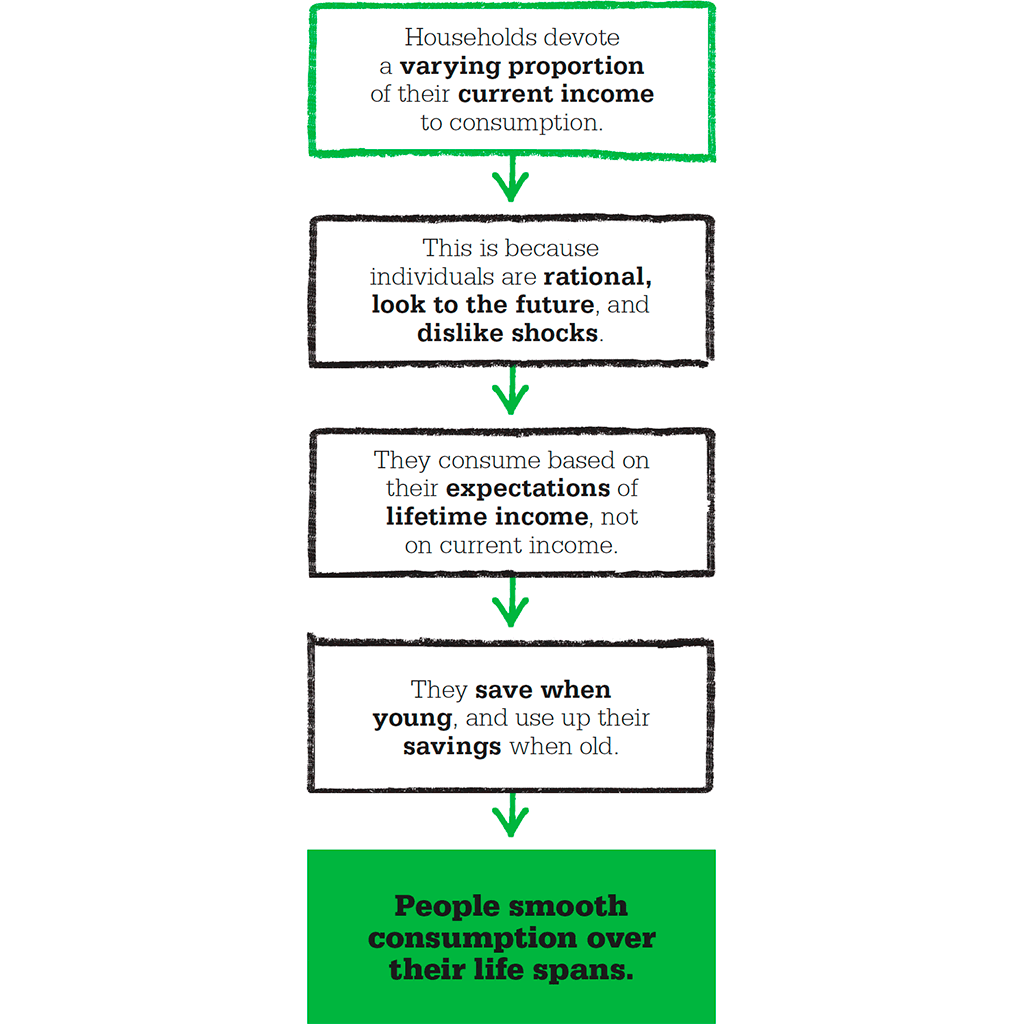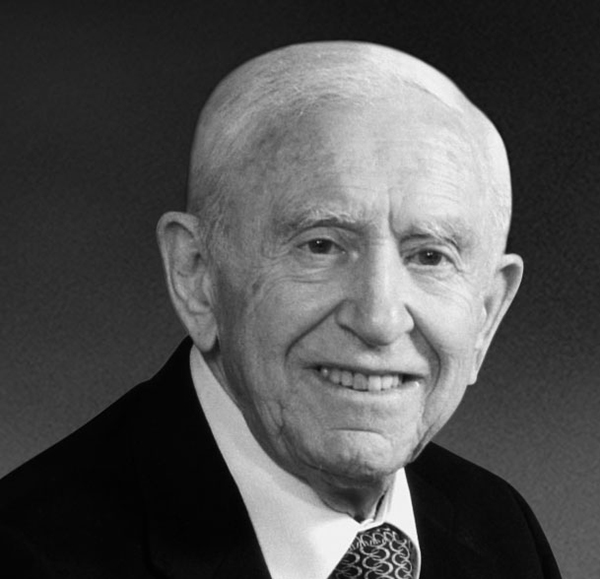

Decision making
Franco Modigliani (1918–2003)
1936 John Maynard Keynes publishes The General Theory of Employment, Interest and Money, proposing a simple mathematical function to describe consumption.
1938 Keynesian economist Alvin Hansen predicts long-term stagnation in the US economy.
1978 US economist Robert Hall estimates a function to describe US consumption, potentially confirming a version of Friedman’s theory.
1982 US economists Robert Hall and Frederick Mishkin propose that households follow a “rule of thumb” when planning their consumption.
In 1936, John Maynard Keynes’s The General Theory of Employment, Interest, and Money put the issue of consumption center stage: if total demand in the economy is critical to making it run smoothly, the groups who make up that demand matter a great deal. Public spending came under government control. Investment by firms was related to the interest rate. But consumption by households presented more of a challenge.

Keynes claimed that households consume a fraction of their income and save the rest, with richer households saving more. The proportion all households spend determines the size of the “multiplier”—the amount that government spending increases when put into practice. It creates jobs and income, which is multiplied by the spending of those who received the extra jobs and income—and in this way they impact on the general economy. For Keynesian economists this multiplier effect lies behind the way the economy moves between boom and recession over time. For this reason getting an accurate picture of consumption is critical.
Keynes’s theory makes three empirical predictions. First, richer households will save more than poorer ones. Second, over time, as the economy grows, the amount people spend will rise less quickly than income, since households will be growing richer and so spending proportionately less of their income. Third, following on from this, richer economies will become increasingly “lethargic:” when consumption falls in ratio to income, it reduces the multiplier and the economy begins to stagnate.
However, the theory’s predictions did not match well with reality. The ratio between household consumption and income over the long run turned out to be stable across a wide range of countries, rather than decreasing with growth. It fluctuated over short periods of time but did not move consistently in any particular direction. After World War II economists predicted stagnation, but economies everywhere boomed.
Two solutions to the mystery gained acceptance. Both proposed that rational individuals do not consume blindly out of their current income, but look to the future and develop expectations about how much they need to save. In 1954, Italian economist Franco Modigliani suggested this relates to stages in life. When people are economically active, they save toward old age. When they are older, they use up their savings. They try to keep consumption constant, smoothing its path over time. This is known as the life-cycle hypothesis.
"Successive generations seem to be less and less thrifty."
Franco Modigliani
Three years later US economist Milton Friedman proposed the related theory that people smooth their consumption over time around their “permanent income”—an expectation of future earnings, based mostly on current wealth. Any extra income is “transitory” and will be saved. This is known as the permanent income hypothesis.
More recent developments in consumption theories have suggested that in fact consumers tend to use “rules of thumb” and other forms of “non-rational” behavior when making decisions about how much to spend or save.

Retirement is only enjoyable when we have funds to replace our income. Franco Modigliani said that our awareness of this makes us save over time to allow for constant consumption.

Franco Modigliani was born in Rome, Italy, in 1918. He initially studied law at the University of Rome, but switched to economics. In 1938, Mussolini passed a series of anti-Semitic laws, and Modigliani—a fervent antifascist—left for Paris and then New York with his wife, the antifascist activist Serena Calabi. He supported his growing family by bookselling while studying. He took a series of teaching posts before becoming a professor of economics at the Massachusetts Institute of Technology (MIT). In 1985, he won the Nobel Prize for his pioneering analyses of savings and financial markets. After his death in 2003, the economist Paul Samuelson said that he had been the “greatest living macroeconomist.”
1954 Utility Analysis and the Consumption Function (with Richard Brumberg)
1958 The Cost of Capital, Corporation Finance and the Theory of Investment (with Merton Miller)
1966 The Life Cycle Hypothesis of Saving
See also: Economic man • Borrowing and debt • The Keynesian multiplier • Rational expectations